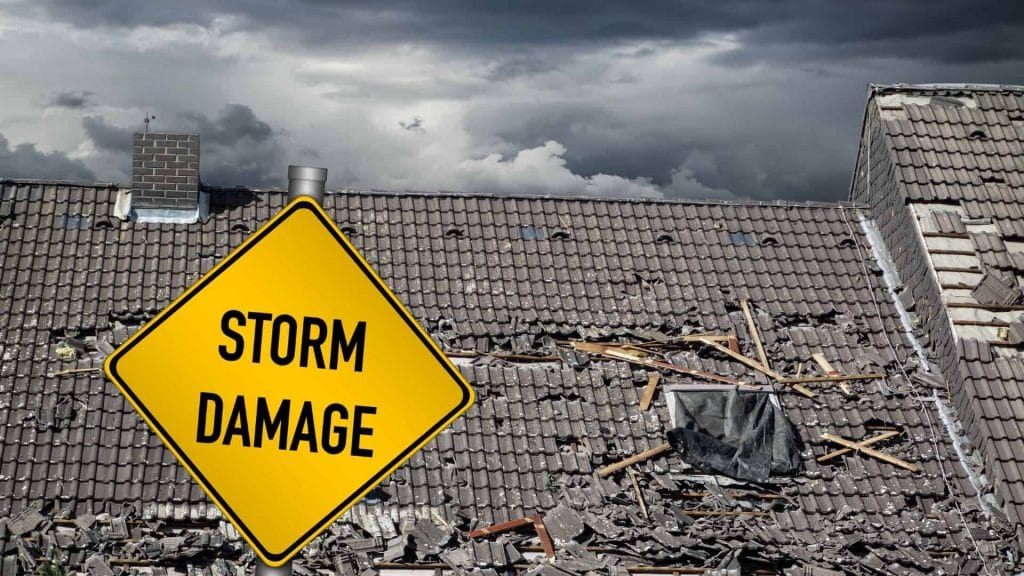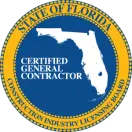Storms can cause a significant amount of damage to your roof, often leading to costly repairs if left unchecked. Whether it’s high winds, heavy rain, hail, or fallen trees, the weather can take a serious toll on your roof’s integrity. Spotting storm damage early on is crucial to preventing further issues, such as roof leaks and structural damage. In this guide, we’ll walk you through how to spot roof damage after a storm, what steps to take afterward, and how to protect your roof from future storms.
Understanding the Importance of a Storm Damage Roof Inspection
After a storm, the first step is to schedule a professional storm damage roof inspection. Roofs are exposed to various elements, and even a seemingly minor storm can cause hidden damage. A roofing contractor will assess all areas of your roof, including the shingles, flashing, and gutter system, to ensure everything is intact and functioning properly.
How to Spot Roof Damage After a Storm
Spotting roof damage can be tricky, especially if you’re not familiar with what to look for. After a storm, it’s essential to inspect your roof carefully. Start by looking for these common signs of roof damage:
1. Missing or Damaged Shingles
Shingles are one of the first parts of your roof to be affected by wind and hail. Look for any missing shingles or those that are cracked, curled, or torn. These damaged shingles leave your roof vulnerable to leaks.
2. Loose or Damaged Roof Flashing
Flashing is used around chimneys, vents, and other roof penetrations. If the flashing is damaged or dislodged, it can lead to water leakage, making it a priority to fix after a storm.
3. Hail Damage
Hailstorms can cause significant damage to your roof. Check for dimpled or cracked shingles, which are a common sign of hail impact. Hail damage may not always be obvious, so a professional hail damage roof inspection is often necessary.
4. Wind Damage
High winds can lift or tear shingles off your roof, especially if they were already compromised. Inspect the perimeter of your roof and the ground around your house for fallen shingles or debris, which are strong indicators of wind damage.
5. Debris on the Roof
Branches, twigs, or larger debris can accumulate on your roof during a storm. While not always damaging, large debris can cause punctures or obstruct gutters, leading to water buildup and potential leaks.
Storm Roof Repair: Taking Immediate Action
After identifying any storm damage, it’s important to take swift action. Temporary repairs can be done to prevent further damage, especially if you have a roof leak after a storm. Use a tarp to cover any exposed areas or leaks until a professional roofing contractor can assess the damage and provide a permanent solution.
Emergency Roof Repair After Storm Damage
In some cases, immediate emergency roof repair is necessary, especially if there is a roof leak after a storm. Water intrusion can cause significant damage to the structure and interior of your home, so it’s vital to fix leaks as soon as possible. Temporary solutions, such as tarping, can help minimize damage while you wait for a roofing contractor to make the necessary repairs.
The Cost of Roof Damage Repair: What to Expect
Roof damage repair cost can vary depending on the extent of the damage. Minor repairs may cost a few hundred dollars, while major repairs or a full roof replacement may run into thousands. Factors that influence the cost of repairs include:
- The type of roofing material
- The severity of the damage
- Whether the storm caused leaks or structural damage
- Labor costs in your area
A roof damage assessment by a qualified roofing contractor will give you an accurate estimate for repairs, ensuring that you understand the full scope of the work needed.
Roof Damage Insurance Claim: Navigating the Process
After a storm, many homeowners will file a roof damage insurance claim to help cover repair costs. It’s essential to document all visible damage before the insurance adjuster arrives. Take clear photographs of the damage and note the date and time of the storm. A roofing contractor experienced in storm damage inspections can also provide a professional report to support your claim.
How to Handle Roof Storm Damage Claims
The claims process can be complicated, but with the help of your roofing contractor, you can ensure that all necessary documentation is submitted. Some roofing contractors may even assist in negotiating with your insurance company to ensure you receive fair compensation.
Common Roof Problems After a Storm
While storm damage can vary depending on the severity of the weather, some roof problems are more common than others. These include:
1. Roof Leaks After Storms
A roof leak after a storm can be caused by missing shingles, damaged flashing, or clogged gutters. If left unchecked, leaks can lead to mold, mildew, and water damage in your attic or walls.
2. Clogged Gutters
Debris from the storm can clog gutters, leading to water overflow and potential leaks. Cleaning your gutters after a storm is essential to ensure proper water drainage and to prevent further roof damage.
3. Tree Damage
Fallen trees or branches can cause severe roof damage, especially if they break through the roofing materials. If a tree has fallen on your roof, immediate professional assessment and repairs are necessary to prevent further damage.
Roof Protection Tips: How to Prevent Future Storm Damage
While you can’t control the weather, there are steps you can take to reduce the risk of damage to your roof during storms.
1. Regular Roof Maintenance
Performing regular roof maintenance, such as cleaning gutters and replacing damaged shingles, can help prevent major damage during a storm. A well-maintained roof is more likely to withstand the effects of wind and rain.
2. Strengthening Roof Flashing
Ensure that the flashing around your roof’s penetrations is intact and secure. Flashing is one of the most vulnerable parts of your roof and often the first to fail during a storm.
3. Trim Trees and Branches
Overhanging branches can pose a threat during high winds. Trim trees and branches that are near your roof to reduce the risk of them causing damage in a storm.
Roof Restoration After Storm Damage
If your roof has experienced significant damage, restoration may be necessary. A professional roofing contractor can assess the extent of the damage and recommend the best course of action. This may include replacing damaged shingles, repairing flashing, or even installing a completely new roof if the damage is extensive.
Signs of Roof Damage From Heavy Rain
Heavy rain can expose weaknesses in your roof, such as leaks or poor drainage. After a storm with heavy rainfall, check for water stains in your attic or ceiling, which could indicate a roof leak. A roof inspection after heavy rain will help identify these issues early and prevent further damage.
Conclusion: Act Quickly to Protect Your Roof
Storm damage can wreak havoc on your roof, but with prompt attention and professional help, you can minimize the impact and prevent further issues. After a storm, don’t wait to inspect your roof for damage. Look for signs of missing shingles, hail damage, or leaks, and take immediate steps to repair any damage. Working with a trusted roofing contractor can ensure that your roof remains in good condition and is protected for years to come.
If you’re dealing with roof damage from a recent storm, contact Gravity Roofing for a professional storm damage roof inspection. Our team is experienced in storm roof repairs and can help you navigate the insurance claims process, ensuring your roof is restored to its pre-storm condition. Call us today for a comprehensive roof assessment and expert repair services.














